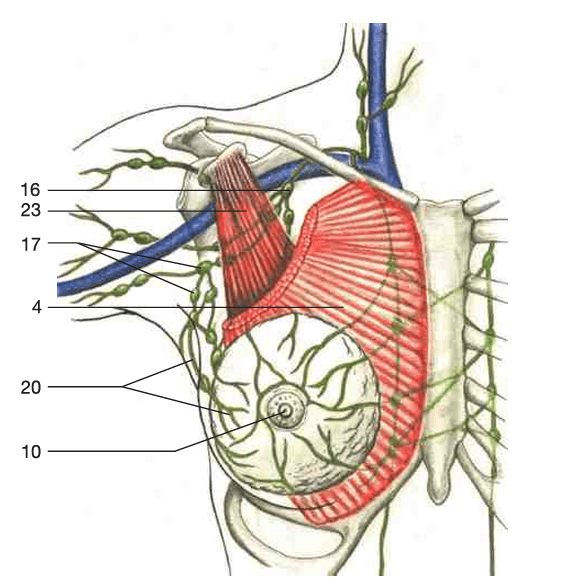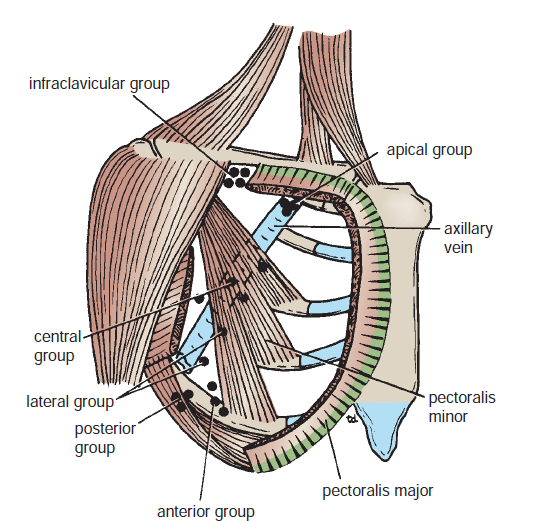Axillary Lymphadenitis
content of this page
1- Introduction
2- Anatomical Overview
3- Causes
Introduction
Axillary lymphadenitis is the inflammation of the lymph nodes located in the axillary (armpit) region. Lymph nodes are small, bean-shaped structures that are part of the lymphatic system and play a crucial role in the body’s immune response. They filter lymphatic fluid and trap pathogens, such as bacteria and viruses, as well as cancer cells.

Anatomical Overview
The axillary lymph nodes (20 to 30 in number) drain lymph vessels from the lateral quadrants of the breast, the superficial lymph vessels from the thoraco-abdominal walls above the level of the umbilicus, and the vessels from the upper limb.
The lymph nodes are arranged in six groups:
1-Anterior (pectoral) group: Lying along the lower border of the pectoralis minor behind the pectoralis major, these nodes receive lymph vessels from the lateral quadrants of the breast and superficial vessels from the anterolateral abdominal wall above the level of the umbilicus.
2-Posterior (subscapular) group: Lying in front of the subscapularis muscle, these nodes receive superficial lymph vessels from the back, down as far as the level of the iliac crests.
3- Lateral group: Lying along the medial side of the axillary vein, these nodes receive most of the lymph vessels of the upper limb (except those superficial vessels draining the lateral side—see infraclavicular nodes, below).
4- Central group: Lying in the center of the axilla in the axillary fat, these nodes receive lymph from the above three groups.
5- Infraclavicular (deltopectoral) group: These nodes are not strictly axillary nodes because they are located outside the axilla. They lie in the groove between the deltoid and pectoralis major muscles and receive superficial lymph vessels from the lateral side of the hand, forearm, and arm.
6- Apical group: Lying at the apex of the axilla at the lateral border of the 1st rib, these nodes receive the efferent lymph vessels from all the other axillary nodes.

Causes
- Infections: Bacterial infections (e.g., Staphylococcus or Streptococcus), viral infections (e.g., mononucleosis), fungal infections, and parasitic infections can lead to inflammation of the lymph nodes.
- Tuberculosis: Mycobacterium tuberculosis infection can cause lymphadenitis, known as tuberculous lymphadenitis.
- Cat Scratch Disease: Bartonella henselae, a bacterium transmitted through cat scratches, can cause axillary lymphadenitis.
- Autoimmune Diseases: Conditions like rheumatoid arthritis or lupus can result in lymph node inflammation.
- Cancer: Metastatic cancer or lymphoma can present as swollen and inflamed lymph nodes in the axillary region.